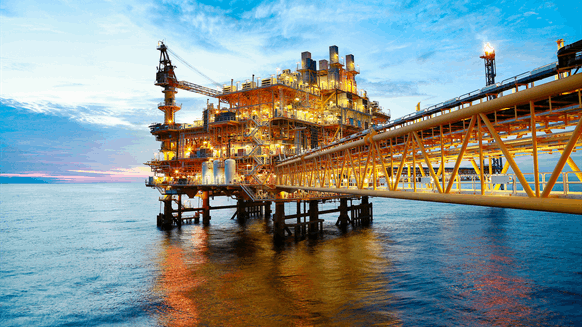The Njord field in the Norwegian Sea has been officially opened by Petroleum and Energy Minister Terje Aasland following upgrades to the platform and the FSO.
Major upgrades to the floating storage and offloading vessel and platform mean that field life and production are further increased.
“With the war in Ukraine, the export of Norwegian oil and gas to Europe has never been more important than now. The reopening of Njord contributes to Norway remaining a stable supplier of gas to Europe for many years to come,” says Terje Aasland, Minister of Petroleum and Energy.
The Njord field began production in 1997 and was originally due to produce until 2013. However, systematic work with increased recovery means large volumes of oil and gas remain, Equinor said in a statement from the company. New discoveries in the area can also be produced and exported through Njord, he added.
In 2016, the platform and FSO were disconnected from the field and towed to shore for major upgrades. On 27 December 2022, production resumed from the Njord field.
“This is the first time a rig and FSO has been disconnected from the field, upgraded and towed back to shore. We have now doubled the life of the field,” says Grete B. Haaland, senior vice president of exploration and production north of Equinor.
“It’s been a big and demanding job, carried out in part during a pandemic, and I’d like to thank everyone involved in preparing Njord to continue supplying oil and gas to the market. With the prices we anticipate in the coming years, this comprehensive improvement project will pay for itself in just under two years after commencement,” added Haaland.
Not only has field life doubled, says the Equinor press release. The ambition is also to double production and produce roughly the same volume Njord has produced so far, around 250 million barrels of oil equivalent, Equinor highlighted.
Ten new wells will be drilled at Njord from an upgraded drilling rig, according to Equinor, which said discoveries have previously been made in the Njord area and further exploration will be conducted near the field.
In addition, two new underwater fields have already been linked to Njord. On April 8, the Equinor-operated Bauge field began production, while the Fenja subsea field, operated by Njord partner Neptune Energy, came online on April 27. The recoverable volumes of the two fields combined are 110 million barrels of oil equivalent.
The plans call for a future partial electrification of the Njord field from shore power via the Draugen platform in the Norwegian Sea, thereby reducing annual CO2 emissions by around 130,000 tonnes.
It is worth remembering that at the end of 2022, the Njord project was launched, however, production was affected by problems with important processing equipment during the ramp-up phase. By the end of March, those issues were resolved and production has been performing well since then, Neptune Energy said.
Njord’s licensees are Wintershall Dea Norge AS (50 percent), Equinor Energy AS (27.5 percent, operator) and Neptune Energy Norge AS (22.5 percent).
To contact the author, please email andreson.n.paul@gmail.com


